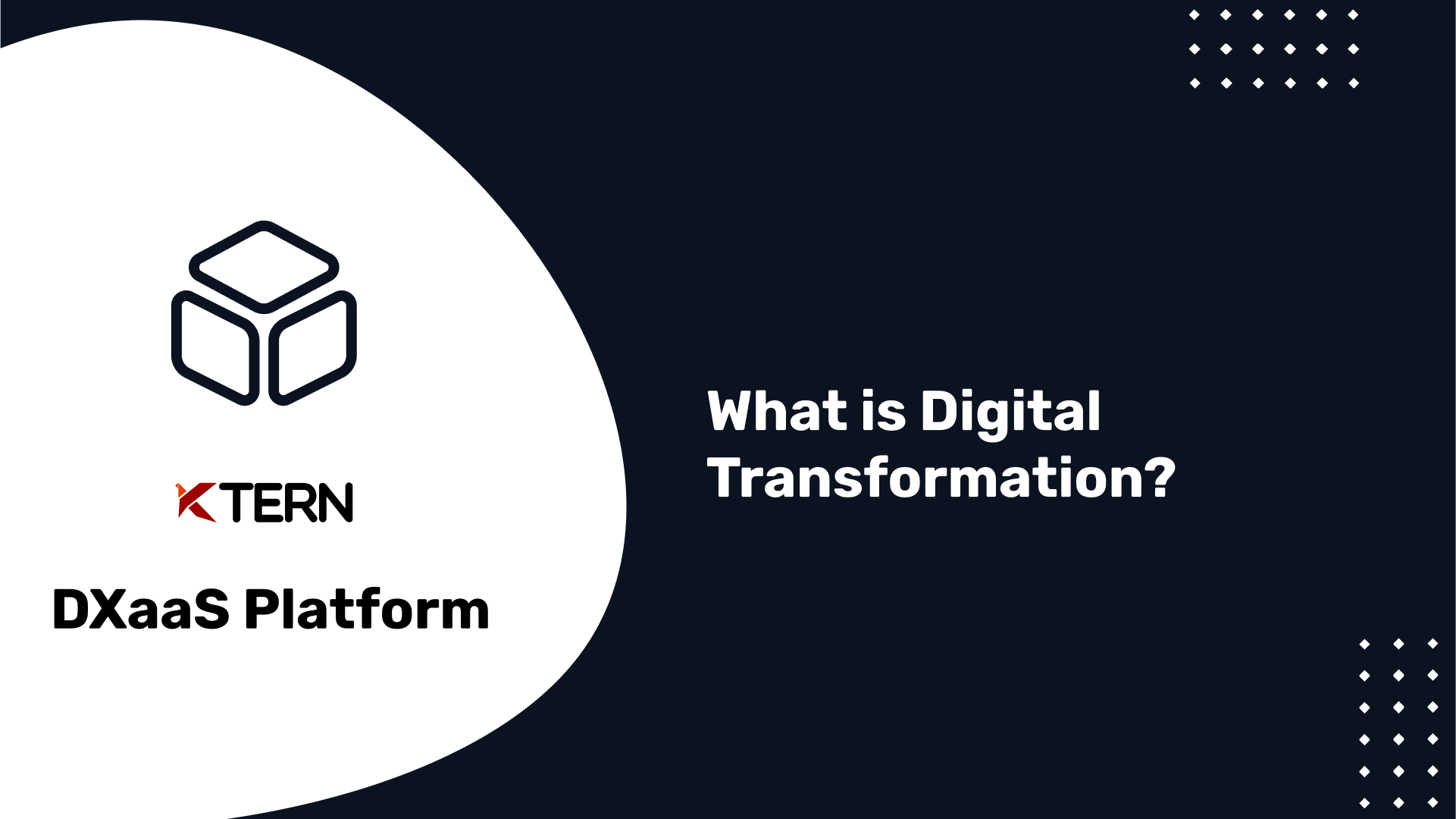What is Digital Transformation?
Digital disruption, or in other words, Digital Transformation is happening everywhere – and changing everything. It’s driving new business models, new ways of working, and new ways of collaborating and communicating.
With the advent of technology innovations like Machine Learning, Artificial Intelligence, and the Internet of Things (IoT), our hyperconnected world has turned into a huge information system where business value no longer lies in traditional assets, but in information about those assets. For enterprises that are willing to think big, embrace change, move quickly, and organize differently, there are countless opportunities to reap the rewards of the digital economy.

Table of contents
- Overview of Digital Transformation
- The Top Priorities for CEOs in Digital Transformation
- What is the competitive advantage of digital transformation?
- Characteristics of a Digitally Transformed Organization
- How do you get started with digital transformation?
- Next Steps
Overview of Digital Transformation
Digital transformation refers to the process of leveraging digital technologies to transform and optimize business operations, products, services, and customer experiences. This includes using technologies such as the Internet of Things (IoT), artificial intelligence (AI), machine learning (ML), and cloud computing to improve business processes, create new revenue streams, and enhance customer experiences.
Digital transformation has become a key strategic priority for many organizations as they seek to stay competitive and relevant in an increasingly digital economy. By embracing digital technologies, organizations can unlock new opportunities, reduce costs, and improve efficiency, agility, and scalability.

However, digital transformation is not just about adopting new technologies. It requires a fundamental shift in the organization's culture, processes, and mindset. Successful digital transformation initiatives involve rethinking the entire business model and aligning it with the changing digital landscape.
Digital transformation can provide many benefits, including improved customer engagement, enhanced employee productivity, increased revenue growth, and improved risk management. However, it also comes with its share of challenges, such as data privacy and security, legacy systems, and talent acquisition and retention.
The Top Priorities for CEOs in Digital Transformation
Digital transformation is now a CEO priority as more business leaders understand that the organizations that thrive in the digital economy will be those that:
- Can execute on a vision for digital transformation
- Blend digital and physical experiences to garner customer allegiance
- Turn information into a competitive advantage
- Create new revenue streams from connected systems
- Leverage technology to win the talent war
What is the competitive advantage of digital transformation?
Customer expectations rise every day, so each month you wait, the further behind you’ll find yourself. What does this mean for business? At the very core, it means a company must be ready for change. Its business processes, the people, the systems that support business, and even the business models must all be designed to maximize agility.
People talk about transforming products into services or utilizing new channels to market, and that’s true. But, no one can look over the horizon and get a perfect view of the future. So companies need to be ready with a foundation that can support a diverse array of opportunities, because they’ll pop up with alarming speed in every geography. The greatest competitive advantage companies can gain from digital transformation is the ability to quickly pivot and capture new opportunities.

This is a terrific opportunity for IT departments in every industry to drive a two-pronged innovation agenda, addressing customer expectations.
First, companies can leverage IT to drive competitive advantage with smarter, simplified business processes and new, compelling business models.
Second, landscapes must be simplified so they can become more flexible. Too many companies rely on solutions that were designed for computing systems a generation or two ago. This incumbent IT infrastructure cannot meet the demands of business today.
Characteristics of a Digitally Transformed Organization
Leaders in digital transformation are organizations that are highly connected: complex, adaptive systems that function more like an organism than a machine. These organizations share three common characteristics:
- Seamless: They are using digital technology to offer a seamless, in-the-moment customer experience that delivers personalization through automation.
- Connected: These seamless experiences can be achieved only when processes and the enterprise are connected to ecosystems, things, people, and customers.
- Data driven: Digital experiences use sophisticated data analysis and intuitive user design to filter large volumes of information and show you only what you need to know.

How do you get started with digital transformation?
First, organizations must view data as a strategic asset and evolve into a data-driven culture where everyone has the right level of information at their fingertips. Organizations must establish an agile, self-service model where data prep and visualization are available anytime, anywhere, allowing teams and individuals to translate their departmental information into insights and ultimately into outcomes that drive material ROI for the business.
Second, most organizations invest a great deal to maintain and customize their IT landscapes to meet their unique business needs. Today, nearly every organization has some level of cloud presence, typically for customer relationship management (CRM), human capital management (HCM), or procurement. Hence, to digitally transform an organization means to design a comprehensive enterprise cloud strategy that:
- Protects existing investments
- Accelerates innovation
- Keeps an organization’s unique business processes intact
Democratizing SAP Digital Transformation as a Service
Next Steps
To get started with KTern.AI, Click here. Alternatively, if you would like a guided demo of the product from one of our product engineers, kindly get in touch with us by submitting a message at Contact us.




